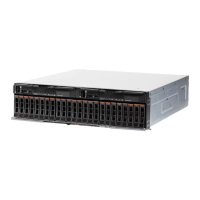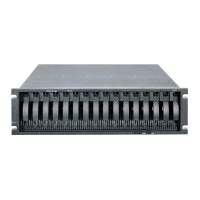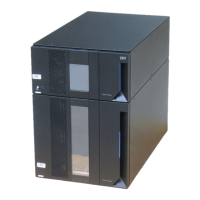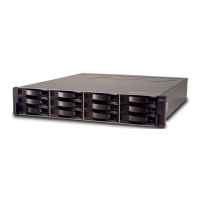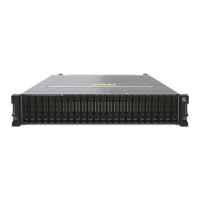114 IBM Midrange System Storage Hardware Guide
4.1.2 Logical drives and controller ownership
Logical drives, sometimes simply referred to as volumes or LUNs (LUN stands for Logical
Unit Number and represents the number a host uses to access the logical drive), are the
logical segmentation of arrays. A logical drive is a logical structure you create on a storage
subsystem for data storage. A logical drive is defined over a set of drives (called an array) and
has a defined RAID level and capacity (see 4.1.1, “DS5000 arrays and RAID levels” on
page 104). The drive boundaries of the array are hidden from the host computer.
The IBM System Storage DS5000 storage subsystem provides great flexibility in terms of
configuring arrays and logical drives. However, when assigning logical volumes to the
systems, it is very important to remember that the DS5000 storage subsystem uses a
preferred controller ownership approach for communicating with LUNs. This means that every
LUN is owned by only one controller. It is, therefore, important at the system level to make
sure that traffic is correctly balanced among controllers. This is a fundamental principle for a
correct setting of the storage system.
Balancing traffic is unfortunately not always a trivial task. For example, if an application
requires a large disk space to be located and accessed in one chunk, it becomes harder to
balance traffic by spreading the smaller volumes among controllers.
In addition, typically, the load across controllers and logical drives is constantly changing. The
logical drives and data accessed at any given time depend on which applications and users
are active during that time period, which is why it is important to monitor the system.
Enhanced Remote Mirror considerations
A secondary logical drive in a remote mirror does not have a preferred owner. Instead, the
ownership of the secondary logical drive is determined by the controller owner of the
associated primary logical drive. For example, if controller A owns the primary logical drive in
the primary storage subsystem, controller A owns the associated secondary logical drive in
the secondary storage subsystem. If controller ownership changes on the primary logical
drive, then this will cause a corresponding controller ownership change of the secondary
logical drive.
4.1.3 Hot spare drive
A hot spare drive is like a replacement drive installed in advance. Hot spare disk drives
provide additional protection that might prove to be essential if there is a disk drive failure in a
fault tolerant array.
Because a DS5000 storage subsystem configuration might have different disk types (FC,
SATA, FDE, and SSD) with different capacities and speeds, you have to plan in advance how
to provide the best hot spare protection for your storage subsystem.
Best practice: Here are some guidelines for LUN assignment and storage partitioning:
Assign LUNs across all controllers to balance controller utilization.
Use the manual method of creating logical drives. This allows greater flexibility for
configuration settings, such as enclosure loss protection and utilizing both drive loops.
If you have highly used LUNs, where possible, move them away from other LUNs and
put them on their own separate array. This will reduce disk contention for that array.
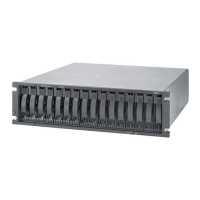
